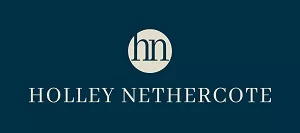What type of crowd funding?
There are many types of 'crowd funding' floating around on the internet. The most visible is project-based – think of websites like Kickstarter or Pozible where you 'pledge' a certain amount of money and get a 'reward' (usually a physical product) in return. These platforms are popular but 'pledgers' have almost no rights to receive any sort of return or reward.
CAMAC has restricted its scope to look only at CSEF, which is a form of corporate capital raising:
"Broadly, [CSEF] contemplates a company (the issuer) seeking funds, particularly initial ('seed') or early stage capital, by offering its equity to internet users (the crowd) in return for cash. Issuers would publish their equity offers through a website (sometimes referred to as an 'online portal' or a 'funding portal'), the operator of which would serve as an intermediary between the crowd investors as the issuer, for the purpose of the equity transactions."
CAMAC's report
CAMAC recognised that the current regulatory environment is hostile to CSEF. If the issuer is structured as a proprietary company, it is unable to have more than 50 non-employee shareholders. If the issuer is a public company it must comply with the Chapter 6D disclosure requirements for any public offering. It was the predominant view that structuring CSEF as a managed investment scheme would be too complex to be commercially attractive.
CAMAC has taken the significant step of proposing a new regulatory regime specifically designed for CSEF offerings. The new regime will comprise two main elements:
- creating a new category of public company, known as an 'exempt public company'; and
- tailored regulation specific to CSEF offerings.
Exempt public companies
Exempt public companies will be exempt from a range of compliance obligations, including:
- not being required to appoint an auditor until it has raised $1 million through CSEF and has expended $500,000;
- not being considered a 'disclosing entity' within the definition of s111AC;
- not being required to hold an AGM or provide half-year financial reports; and
- not needing to comply with some requirements relating to executive remuneration.
In recognition of the relaxed requirements applicable to exempt public companies, CAMAC recommends that the status automatically lapse when:
- the company's capital exceeds $5 million for over 6 months;
- the turnover of the company exceeds $5 million per annum; or
- the company has been an exempt public company for more than three years (with limited extensions available).
CSEF offerings
Some of the proposed regulations specific to CSEF offerings include:
- limiting CSEF to Australian incorporated issuers who do not have complex structures (such as investment or financial institutions); are not listed companies; have not previously made regulated public offers or already have substantial capital;
- shares must be previously unissued, fully paid and limited to a single class;
- a cap of $2 million to be raised by CSEF by any one issuer in any 12 month period;
- certain disclosure requirements tailored to CSEF offerings.
What next?
The Government has not responded to CAMAC's report yet, so it's uncertain to what extent the proposals will be implemented.
The content of this article is intended to provide a general guide to the subject matter. Specialist advice should be sought about your specific circumstances.

